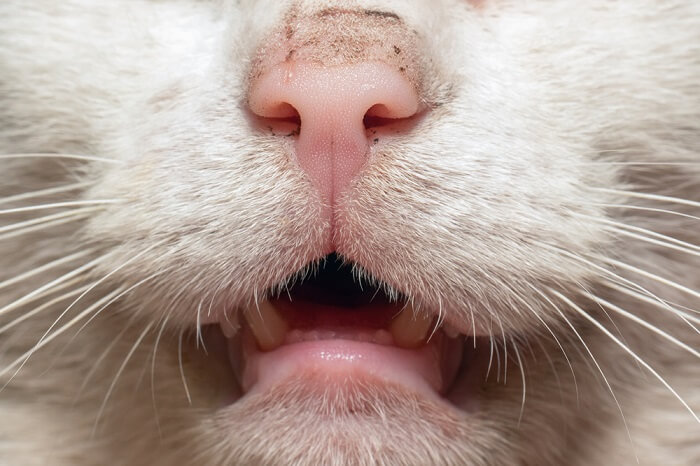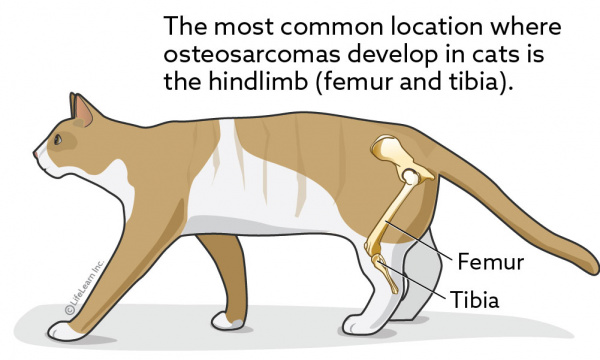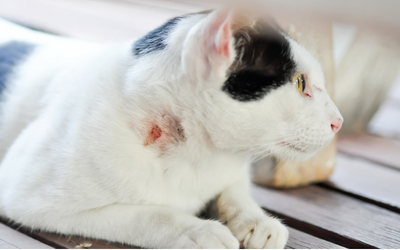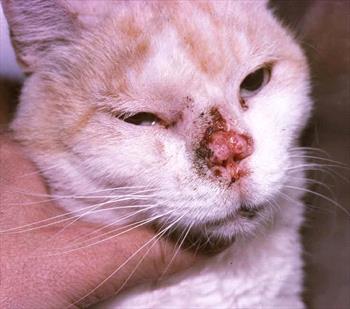sarcoma in cats jaw
He told me the treatment for a benign. The provided history stated the cat had a lytic and proliferative lesion of the carpal bones.

Feline Fibrosarcoma Bluepearl Pet Hospital
The term soft-tissue sarcoma encompasses a broad category of tumors that show up in a cats connective muscle or nervous tissues.

. Bone Cancer in Cats. My cat Momo is 9 years old and has a tumor on his jaw. Jaw If the cancer is affecting the jaw you might notice they are having trouble opening their mouth and eating or lots of saliva in their mouth.
Oral tumors come in many forms and your cats signs will depend on location of the tumor tumor type and tumor size. They may also become infected. They occur in the mandibles or maxillary bones upper jaw around the nasal cavity The exact cause of the condition is unknown and presently it is not possible to prevent Osteosarcoma of Jaw Bones occurrence.
The two most common types of oral cancers that occur in cats include squamous cell carcinomas and fibrosarcomas. They frequently ulcerate break open and bleed. Chemotherapy consists of four to six treatments given at three-week intervals.
Another treatment option is chemotherapy. The whole episode started right around Christmas when he was showing signs of bad pain. Tumors may look small but often extend deeper into the.
A small piece of carpal bone from an eight-year-old domestic short haired cat DSH was submitted to the Texas AM Veterinary Medical Diagnostic Laboratory TVMDL for histopathology. Osteosarcomas can also develop in the skull most commonly in the oral cavity pelvis ribs and vertebrae. It also includes lips the hard and soft palate roof of the mouth upper and lower jaw cheeks tongue and the floor of the mouth.
Often the symptoms will depend on the area of the body the cancer is affecting. Alive one year later. Squamous cell carcinoma SCC is the most common oral malignancy in the cat arising from either the jaw bones or the tongue.
The symptoms of osteosarcoma in cats can be subtle and they may include. But surgery does offer him a chance. Owners may notice a mass in the cats mouth.
Oral tumorsboth non-cancerous and cancerouscan form in any part of your cats mouth. A treatment of this bone tumor may involve surgery chemotherapy and. It is the most common oral cancer in cats.
Bone cancer causes an abnormal swelling to develop in the affected part of the skeleton. Squamous cell carcinoma is an aggressive cancer in the cat and is often not diagnosed until the tumor is advanced. The median survival for upper jaw osteosarcoma is 5-10 months after surgery with 17-27 of dogs being.
After many visits it was discovered that the lump was actually some sort of tumor but the vet wouldnt know exactly which kind without a biopsy. It is usually chosen to treat tumors with a higher likelihood of metastasis but can also be used as an effective method to target cancer cells in cats with vaccine-associated sarcomas. Osteosarcoma of Jaw Bones is a medullary type of osteosarcoma.
1 It accounts for about 90 of oral tumors in felines. Oral squamous cell carcinoma is cancer of the lining of the oral cavity including the gingiva gums tongue palate and tonsils. Osteosarcoma die as a result of local tumor recurrence.
Although there is no specific cause of mouth cancer in cats the following environmental and dietary factors may contribute to the growth of malignant tumors in the oral cavity. Mouth cancer can be a tumor located anywhere within a cats oral cavity including the lips tongue cheeks roof of the mouth upper or lower jaw and back of the mouth. Metastasis to distant organs have not been reported in these dogs.
If an osteosarcoma develops elsewhere in the skull or vertebrae swelling and pain in the. The local recurrence for upper jaw bone cancer is 83-100 and the majority of dogs with upper jaw. Ideally the tumor should be surgically removed from the cats mouth.
This is often the first sign of. An aggressive form of oral cancer in cats oral squamous cell carcinoma or SCC is an extremely invasive tumor that attacks the jaw bone. Lameness that doesnt go away and swelling of the affected bone.
Tumors may appear as swellings on the gums around the teeth on the hard or soft palates. If caught early enough and depending on the location of the tumor your vet might opt for surgery. These are the most common symptoms when a tumor affects.
Mouth cancer is not connected to any breed age or sex of cat but experts believe second-hand smoke could contribute to its occurrence. June 1 2018 by Mallory Pfeifer. Symptoms How can you know if your cat has osteosarcoma.
This depends on where the squamous cell carcinoma mass is located and whether bones are affected. Squamous cell carcinoma is the most common oral tumor seen in cats. Cats suffering from oral tumors often develop jaw cancer or cancer in the oral cavity.
Your cat will need special feeding for instance. Cancer arises from osteoblasts or osteoclasts which are cells that produce a matrix which builds or breaks down bone. The rate of metastasis at the time of diagnosis is low.
Bone Cancer in Cats. The symptoms of bone cancer in cats include physical swelling lameness an abnormal gait and general unwellness. If the carcinoma is contained within the lower jaw your vet can remove the tumor and follow it with radiation therapy.
If the tumor is on the front of the mouth it can be removed with a small piece of jawbone. What are the symptoms. Bone cancer causes a number of signs of unwellness for two main reasons.
Swelling or a mass. It is the most common type of bone cancer in cats and accounts for 70 of bone tumours. Nerve sheath tumor previously called neurofibrosarcoma schwannoma hemangiopericytoma Rhabdomyosarcoma.
Although squamous cell carcinomas dont spread rapidly to other parts of the body oral tumors may be locally invasive and spread to the chest. Tumors are locally invasive and can extend into the bones of the upper or lower jaw. Cats with osteosarcoma of the jaw a form of axial osteosarcoma may have swelling of the jaw difficulty opening the mouth excessive salivation and may be reluctant to eat due to pain.
The cancer causes pain. The physical swelling of the cancer causes mechanical. Osteosarcoma osteogenic sarcoma is an aggressive and destructive type of primary cancer that develops in the bones.
TREATMENT OF MAUL TUMOR AND JAW CANCER IN CATS. By Judith Akins DVM MS.

Tongue Cancer Squamous Cell Carcinoma In Cats Petmd

Chondrosarcoma In Cats Vca Animal Hospital

Liver And Spleen Cancer Hemangiosarcoma In Cats Petmd

Brain Tumors In Cats And Dogs Often The Most Challenging Of Cancers Brain Tumor Dog Treatment Dog Anatomy

How To Spot Squamous Cell Carcinoma In Cats Litter Robot

The Pet Oncologist Vet Oncologist Online Oral Cancer In Cats

Mouth Cancer In Cats Causes Symptoms Treatment All About Cats

Osteosarcoma In Cats Vca Animal Hospital

Signs Of Cancer In Cats How To Tell If Your Cat Has Cancer Daily Paws

4 Types Of Cat Cancer And Their Common Symptoms

Oral Squamous Cell Carcinoma In Cats An Overview Vet In Aurora The Animal Dental Clinic

Oral Tumor Changes Cat S Eating Habits Boston Herald

Oral Squamous Cell Carcinoma In Cats

Mouth Cancer Gingiva Squamous Cell Carcinoma In Cats Petmd

Cancerous And Non Cancerous Growths In A Cat S Mouth Petmd

Abscesses In Cats Vca Animal Hospital

Learn About Oral Cancers In Cats Petcure Oncology

Nasal Squamous Cell Carcinoma In Cats Veterinary Partner Vin
/GettyImages-11673268481-ff230807a7e04e2db8e38e148edb19a5.jpg)